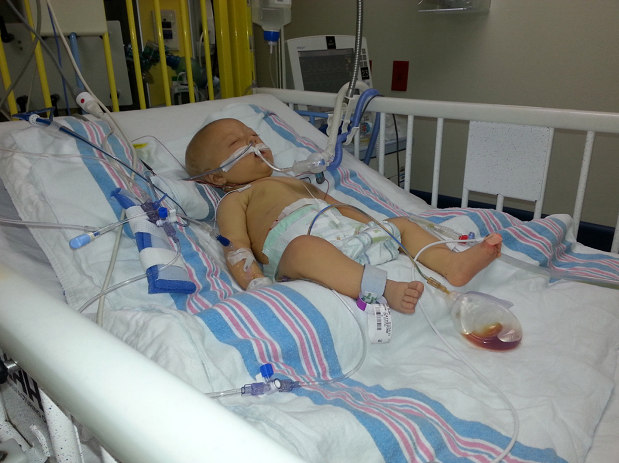Biliary Atresia Symptoms, Causes, Diagnosis and Treatment

What Is Biliary Atresia?
Bile duct, or hepatic duct, is a tube in the liver responsible to carry bile to the gallbladder from the liver. Bile is a liquid that aids digestion by breaking down fats. Biliary atresia is when the development of bile duct inside or outside the liver is not normal. This abnormal development blocks the path for bile to travel from liver to gallbladder and as a result, it gathers within the tube damaging the liver. Biliary atresia is a condition in infants that can lead to cirrhosis and can be deadly. If not treated immediately, liver transplant could be the only way to survive.
What Are The Symptoms Of Biliary Atresia?
While the symptoms of biliary atresia do not evolve immediately after birth, the following may show up after approximately two or three weeks of birth:
- Jaundice. This is a very common symptom of biliary atresia as bilirubin is built up due to the blockage.
- Dark urine.
- Abnormally stinking stool.
- Negligible gain in weight.
- Spleen enlargement.
- Stool colored gray or white.
What Causes Biliary Atresia?
Medical theories claim several reasons that may trigger biliary atresia in infants but no theory has been successfully proven. However, on thing is clear that biliary atresia is not inherited and cannot run through families. The following factors are said to trigger biliary atresia when infant is in the womb or immediately after birth:
- Toxic substances exposure.
- Viral infection.
- Bacterial infection.
- Genetic mutations that are not inherited.
What Are The Risk Factors Of Biliary Atresia?
Infants with the following characteristics are at a higher risk of having biliary atresia:
- Asian or African American race.
- Female.
- Premature birth.
While these are only the factors that increase the risk of biliary atresia, people with none of these factors also suffer biliary atresia.
What Are The Complications Of Biliary Atresia?
If left untreated, biliary atresia can lead to the following complications:
- Liver failure.
- Infection.
- Surgical complications after the Kasai procedure.
- Cirrhosis.
How Is Biliary Atresia Diagnosed?
A combination of several tests and procedures can help doctors diagnose biliary atresia properly. The following diagnostic tests and procedures begin immediately after symptoms like jaundice or gray stool evolve:
- Ultrasound to show images of the bile duct and liver.
- Blood test to evaluate the level of bilirubin.
- Liver scanning.
- X-ray of abdomen.
- Diagnostic surgery.
- Biopsy of liver tissue.
How Is Biliary Atresia Treated?
The only way to resume the flow of bile normally is the Kasai procedure. In this process, the damaged bile ducts are removed from the infant’s body and after the Kasai procedure, bile flows into the small intestines directly. Kasai procedure is more likely to be successful if done on children below the age of 8 weeks. However, if the procedure is not successful, liver transplant is required within one or two years for the infant to survive. Even if Kasai procedure is successful, a liver transplant is needed at later stages in order to survive.
By : Natural Health News




